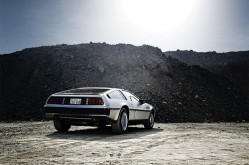Wind power generation in Denmark just exceeded national demand

Unusually high winds allowed Denmark to produce so much power that the country was able to meet its domestic electricity demand – with plenty to spare for Germany, Norway and Sweden.
Earlier this month, Denmark’s wind farms produced 116% of its national electricity demands, and the next morning at low demand, that figure had risen to 140%. So much power was produced that 80% of the surplus were shared equally between Germany and Norway, with the remaining fifth taken by Sweden. The figures were provided on the website of Danish transmission systems operator energinet.dk, who provides a minute-by-minute account of renewable power in the national grid. Figures also showed that Denmark’s wind farms were not even operating at full capacity at the time of the peaks.
Denmark has long been a global leader when it comes to renewable energy, most prominently in wind energy. They were a pioneer in the wind-power industry during the 1970s, with a substantial share of wind turbines around the world today. They are also pursuing the world’s most ambitious policy against climate change; half of its electricity in their electric grid through renewable energy by 2020, an aim to end the burning of fossil fuels entirely in any form by 2050 – not just in electricity production, but in transportation as well.
“It shows that a world powered 100% by renewable energy is no fantasy,†said Oliver Joy, a spokesman for trade body the European Wind Energy Association. “Wind energy and renewables can be a solution to decarbonisation – and also security of supply at times of high demand.â€
Currently Denmark’s energy production is still heavily dependent on fossil fuels, mainly coal, followed by natural gas and oil. Coal is also used partially for direct heating. This means that per capita, emissions of 9.25 tonnes of greenhouse gas in 2012 were still above the European Union average of 8.98, albeit this figure falling sharply. In fact greenhouse gas emissions fell 25 percent from 1990 to 2012, amongst the steepest of any EU nation. They are aiming for a 40 percent cut from 1990 by 2020, matching the EU’s goal for 2030.
1. Wind power generates 140% of Denmark’s electricity demand, The Guardian
2. A Tricky Transition From Fossil Fuel, The New York Times
3. Denmark considers phasing out coal by 2025 in big green shift, Reuters
4. Horns Reef, Denmark, CleanTechnica
-
This is good news. Yes, the panels of today might not be very efienifct. However, as it is being use more often in many homes or countries, there will be a continuous development making it more efienifct than what they are today.Take for instance computers, in the 60s computers were as big as a house while performing very slow. Look at computers today, they’re thin, portable, every efienifct and extremely fast.I see solar energy development in the same way.








